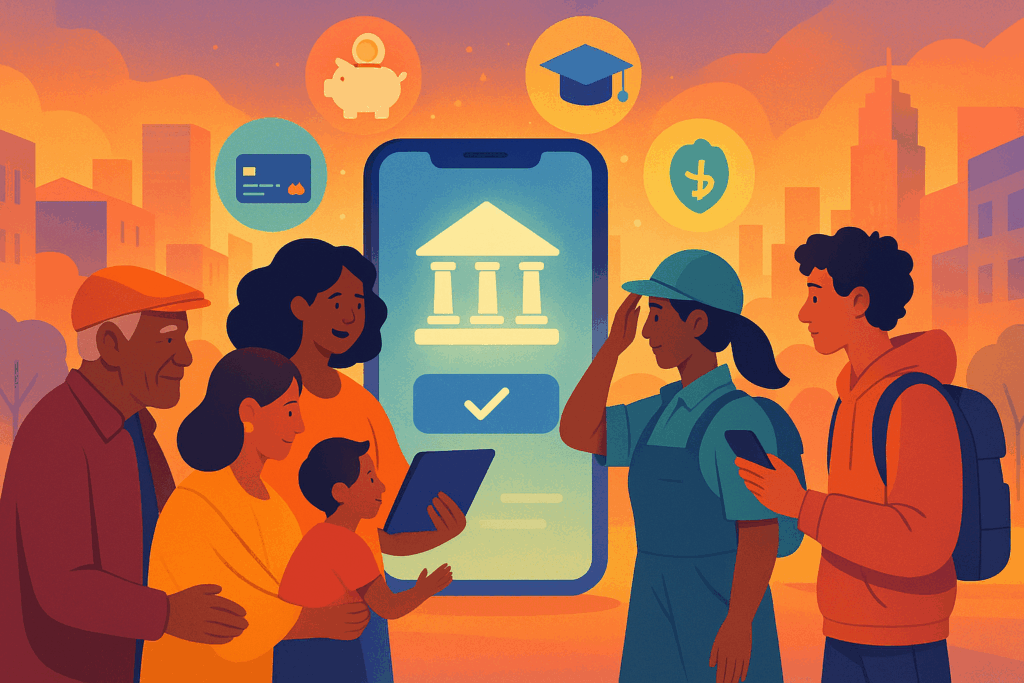In a world where finance often speaks the language of the privileged, it’s not surprising that millions of people still operate outside formal financial systems. Despite progress in digital banking and the rise of fintech, traditional institutions have struggled to serve the needs of the marginalized—whether that’s a rural farmer with no formal ID, a young adult navigating financial independence without generational guidance, or a gig worker living contract to contract. For decades, the question wasn’t “how do we reach them?” but rather “do we even need to?” Today, that question has changed—and the answer must be a resounding yes.
Developing inclusive financial products isn’t just about adding a new feature or opening more accounts. It’s about fundamentally rethinking who we build for, and how. It means dismantling outdated assumptions about creditworthiness, access, literacy, and even what it means to “trust” a financial institution. New audiences are not problems to solve—they’re opportunities to reimagine how finance can actually empower people. Whether we’re talking about unbanked populations in Latin America, underrepresented communities in the U.S., or the vast informal sectors across Africa and Asia, the principle remains: inclusion starts with listening, adapting, and innovating—not imposing.
Financial systems weren’t built for everyone—now they can be

For much of modern history, banks have catered to a narrowly defined customer: formally employed, with a stable income, predictable spending patterns, and a strong paper trail. These criteria inherently excluded large groups—seasonal workers, low-income families, migrants, people with disabilities, and many women. These groups weren’t seen as profitable or reliable, largely because institutions were using the wrong tools to measure value. A migrant worker who sends money home consistently every month might have no credit score, but their behavior clearly demonstrates financial responsibility. We just weren’t paying attention.
That’s changing. Today’s most forward-thinking institutions are realizing that inclusion isn’t just an act of goodwill—it’s a competitive advantage. As legacy banks lose relevance among younger and more diverse demographics, agile fintechs are stepping in to offer alternatives. Some use mobile-based platforms that don’t require a traditional bank account. Others assess credit risk based on behavioral data rather than salary slips or credit histories. For example, a startup might look at how regularly a person tops up their phone, pays their rent, or even how active they are on professional platforms to evaluate risk.
Importantly, these shifts are making it possible for individuals who were once labeled “too risky” to build financial stability on their own terms. Whether it’s access to a microloan to buy a motorcycle for work, an app that helps track daily expenses in an intuitive way, or a flexible savings plan designed for people with irregular incomes, inclusive products are changing lives. But designing these tools isn’t about cutting corners. It’s about building new frameworks that are resilient, context-aware, and human-centered from the ground up.
Designing for dignity, not just functionality
Inclusion is not only about who has access to financial products, but how those products make people feel. Historically, many financial experiences have been intimidating, bureaucratic, and alienating—especially for those unfamiliar with banking systems or who’ve faced discrimination. When someone walks into a branch and feels judged, or downloads an app that assumes a level of financial literacy they don’t have, they’re less likely to engage again. Inclusion, therefore, must go beyond access—it must be about dignity.
Design thinking has become a crucial part of building better financial experiences. That means conducting in-depth research, speaking directly with communities, and designing interfaces and workflows that reflect how people actually live and think. For some, that might mean apps with voice navigation for the visually impaired. For others, it could be color-blind-friendly interfaces, offline functionality, or tools that allow shared financial planning among family members. In some markets, adding an option to speak to a real person instead of a chatbot can make all the difference in trust-building.
Cultural fluency is another critical piece. A savings product might look wildly different in Nairobi than in São Paulo or Mumbai. In some cultures, saving is done communally; in others, privacy is paramount. Payment rhythms, spending triggers, and trust signals all vary. Financial products should reflect those differences instead of erasing them. A well-designed, inclusive product doesn’t just meet users where they are—it invites them in, makes them feel seen, and builds a relationship that can last.
Long-term vision over short-term wins
The path to financial inclusion is not a straight line—and it’s certainly not a short one. Truly inclusive product development demands patience, humility, and a willingness to learn and pivot. It’s not about launching the perfect product right out of the gate, but about co-creating solutions with the communities you’re trying to reach. That means testing, listening, iterating, and sometimes failing in the service of building something meaningful.
Some of the most impactful progress has come from unexpected partnerships. When fintechs collaborate with grassroots organizations, local cooperatives, and NGOs, they gain invaluable insight into community dynamics and pain points. These groups often serve as cultural translators and trust builders, helping financial institutions design in a way that aligns with real needs. Moreover, these collaborations shift power—away from top-down models of aid or charity, and toward equitable, reciprocal relationships.
Measuring success also needs a broader lens. While growth metrics and user numbers matter, so do long-term behavioral shifts. Are people saving more consistently? Do they feel more confident managing money? Are small businesses thriving because they have access to working capital? These outcomes may take longer to surface, but they are far more indicative of impact than app downloads or transaction volume.
And finally, inclusion isn’t a checkbox to be ticked—it’s a mindset to be cultivated. Teams that build inclusive products must be diverse themselves, with lived experiences that reflect the communities they’re serving. They need to ask harder questions, challenge assumptions, and stay committed even when the market signals aren’t immediate. Because financial inclusion, when done right, doesn’t just open doors—it rebuilds the house so everyone has a room.


